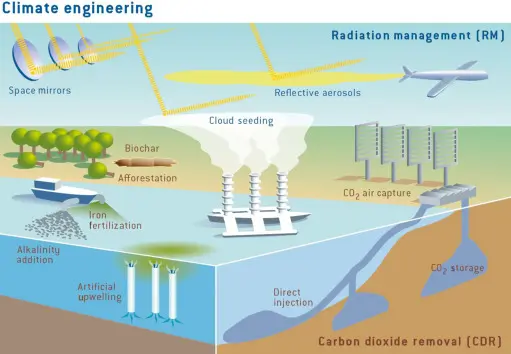
Dr.Seema Jave
As the speed, scale, and complexity of achieving decarbonization of the US economy are better understood, carbon dioxide removal (CDR) is gaining more attention there as a solution.
CDR is a broad set of processes and technologies that result in the net removal of CO₂ from the atmosphere. Because of policies implemented over the past few years, the US is now a global leader in policy support for CDR.
It’s important to note that CDR is not a comprehensive solution for US decarbonization nor an excuse to continue emitting as usual.
Instead, it is a strategy to complement deep emissions cuts across all sectors in an effort to limit global temperature rise as fast as possible.
However, more federal policy support is needed to expand the portfolio of CDR options and ensure a robust CDR market exists to support the goal of mid-century decarbonization.
A robust CDR industry is necessary to complement US decarbonization Based on global climate models, various decarbonization studies. It is estimated by internal modeling estimates that in order for the US to decarbonize by mid-century, at least one gigaton of annual CDR capacity will need to be available by then.
That’s up from low-single-digit megatons of CDR today and equal to the capacity to remove roughly 20% of the carbon dioxide (CO2) emitted in the US in 2023.
All of this CDR is above and beyond what natural carbon sinks are expected to contribute in the land use, land-use change, and forestry sector absent additional policy support.
Exactly how much CDR is needed in the coming decades is uncertain and depends on the speed of other decarbonization actions, but access to CDR is undoubtedly an option the federal government needs to invest in to achieve mid-century decarbonization.
CDR can play two primary roles in decarbonizing the US economy. First, it can help the US achieve net-zero emissions by offsetting greenhouse gas (GHG) emissions from particularly hard-to-abate sectors, such as aviation and industry.
Second, CDR can remove anthropogenic emissions that already exist in the atmosphere, often referred to as legacy emissions, to limit global temperature rise or, over time, potentially reduce global temperatures.
Looking past mid-century and assuming the US and the world successfully decarbonize, CDR is the only strategy that can continue to reduce atmospheric concentrations of CO2 in the long run.
 Jubilee Post News & Views
Jubilee Post News & Views






